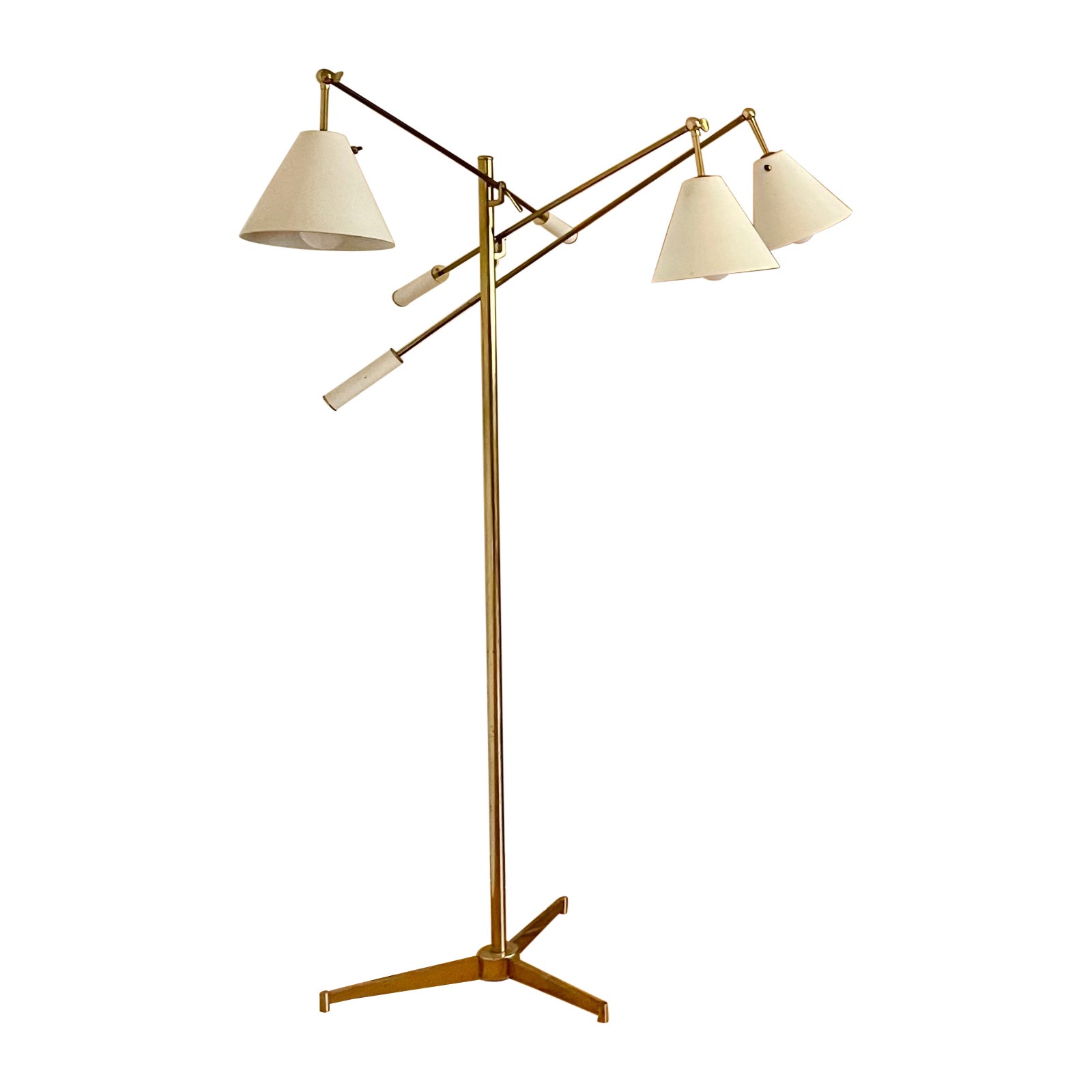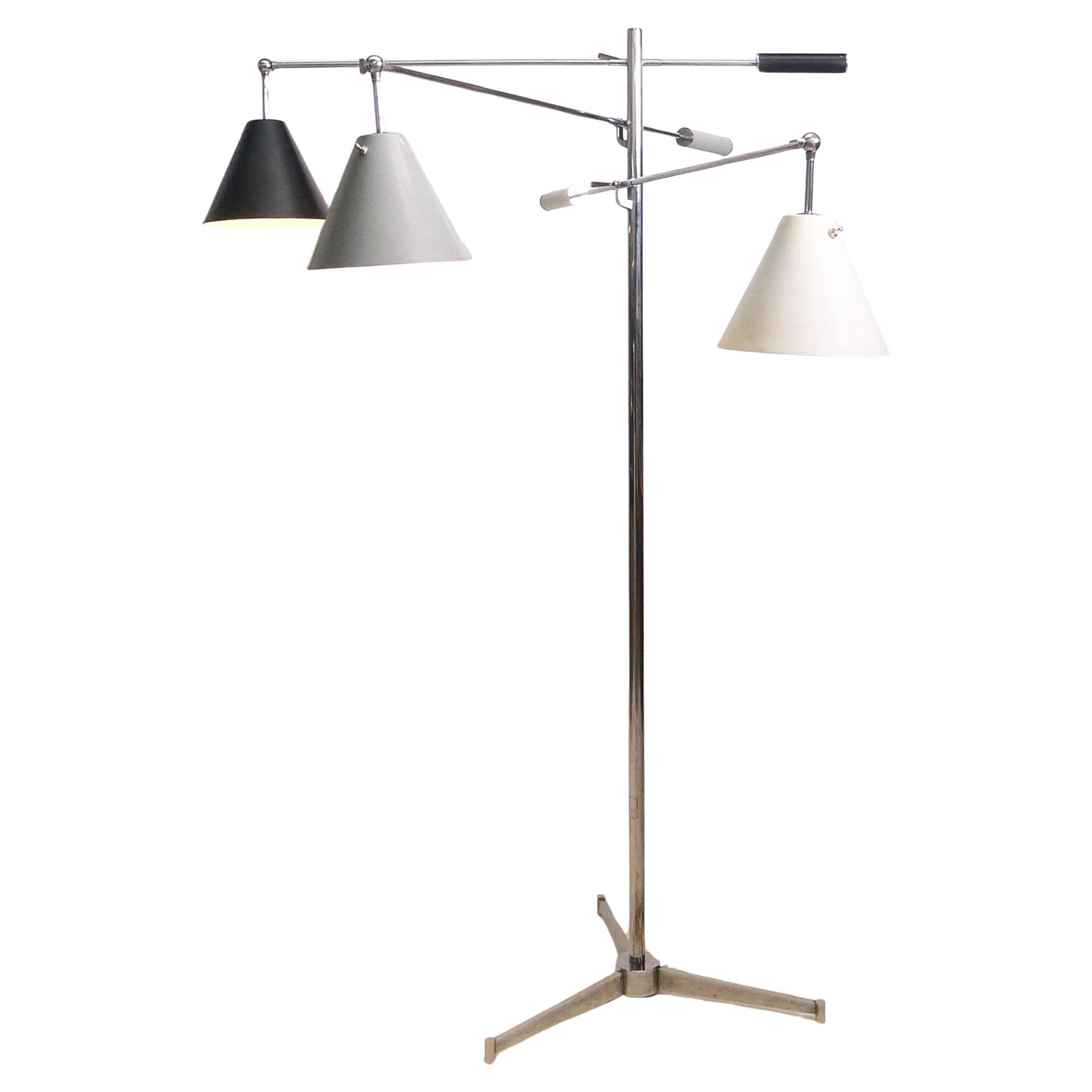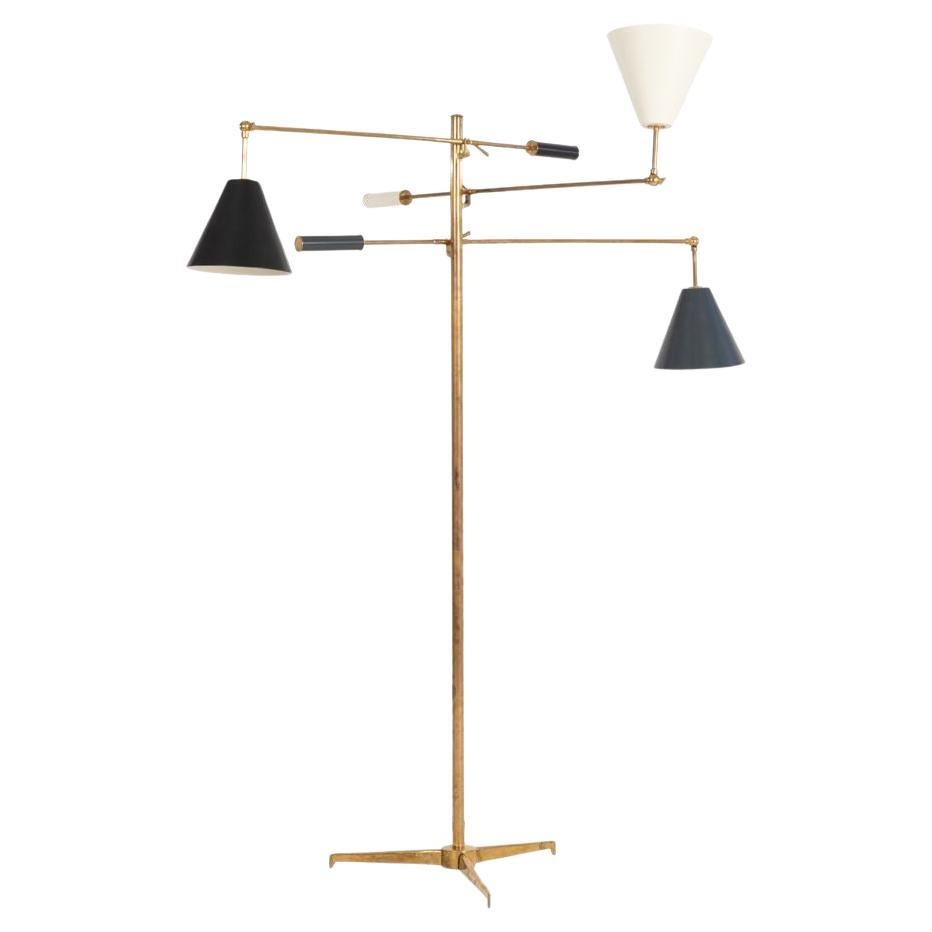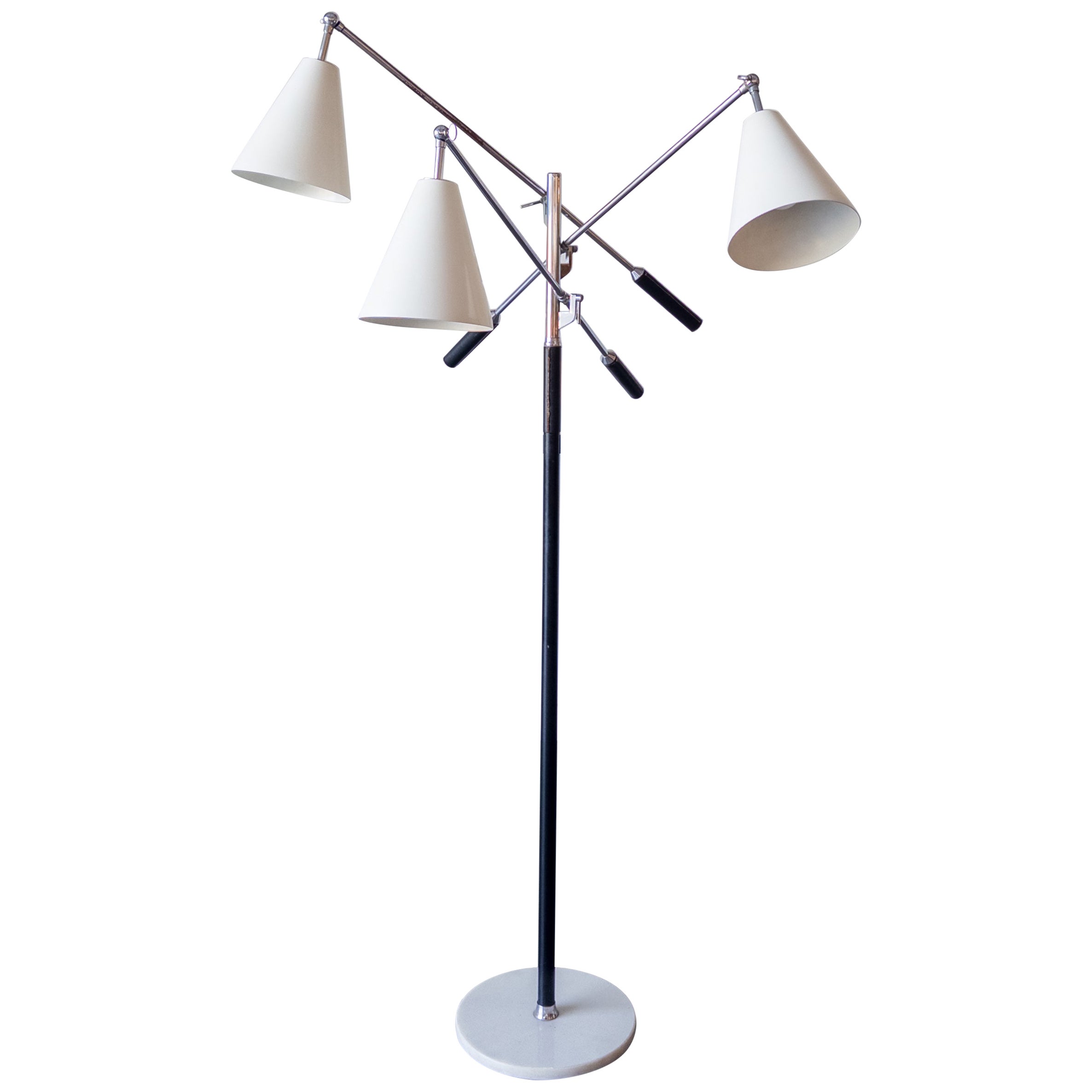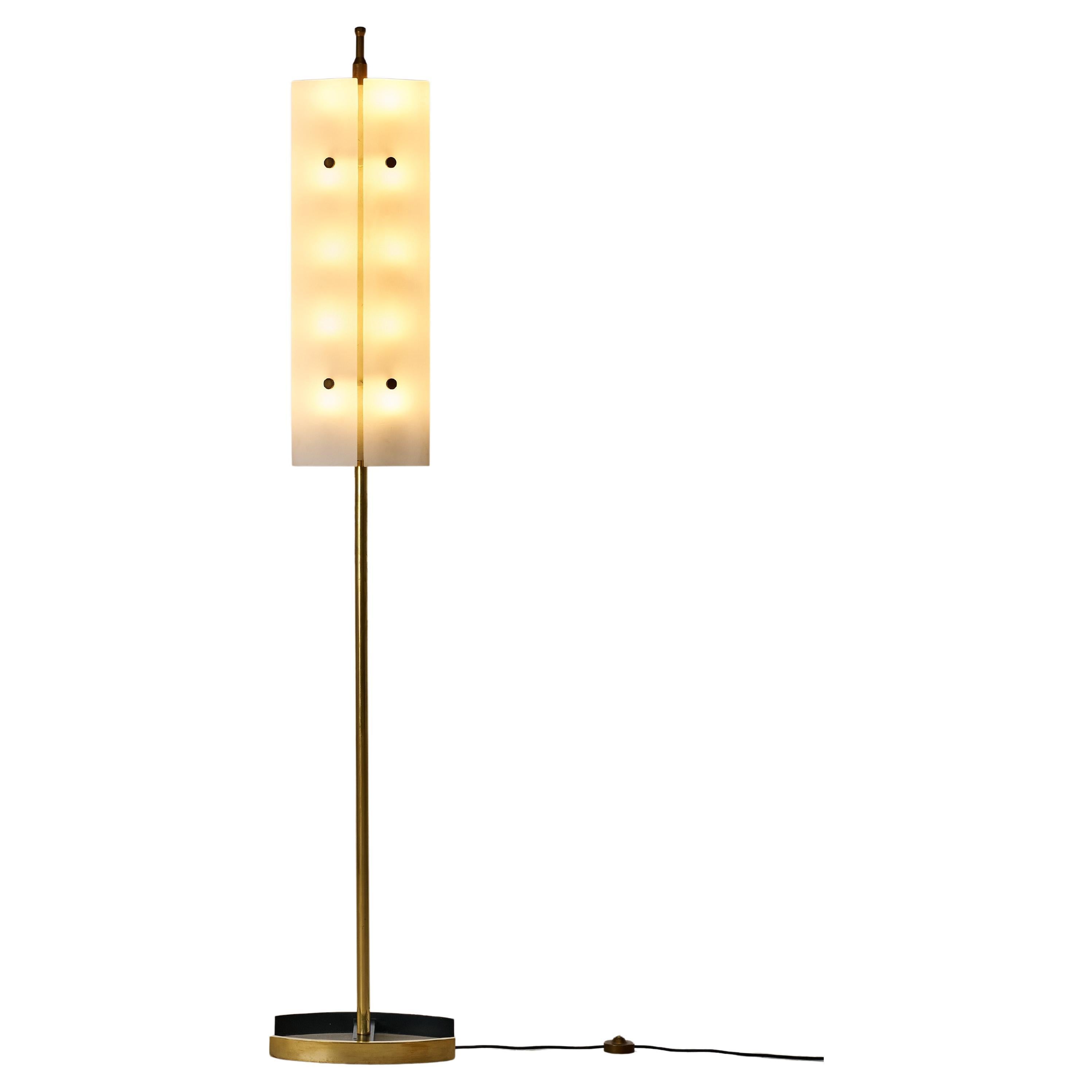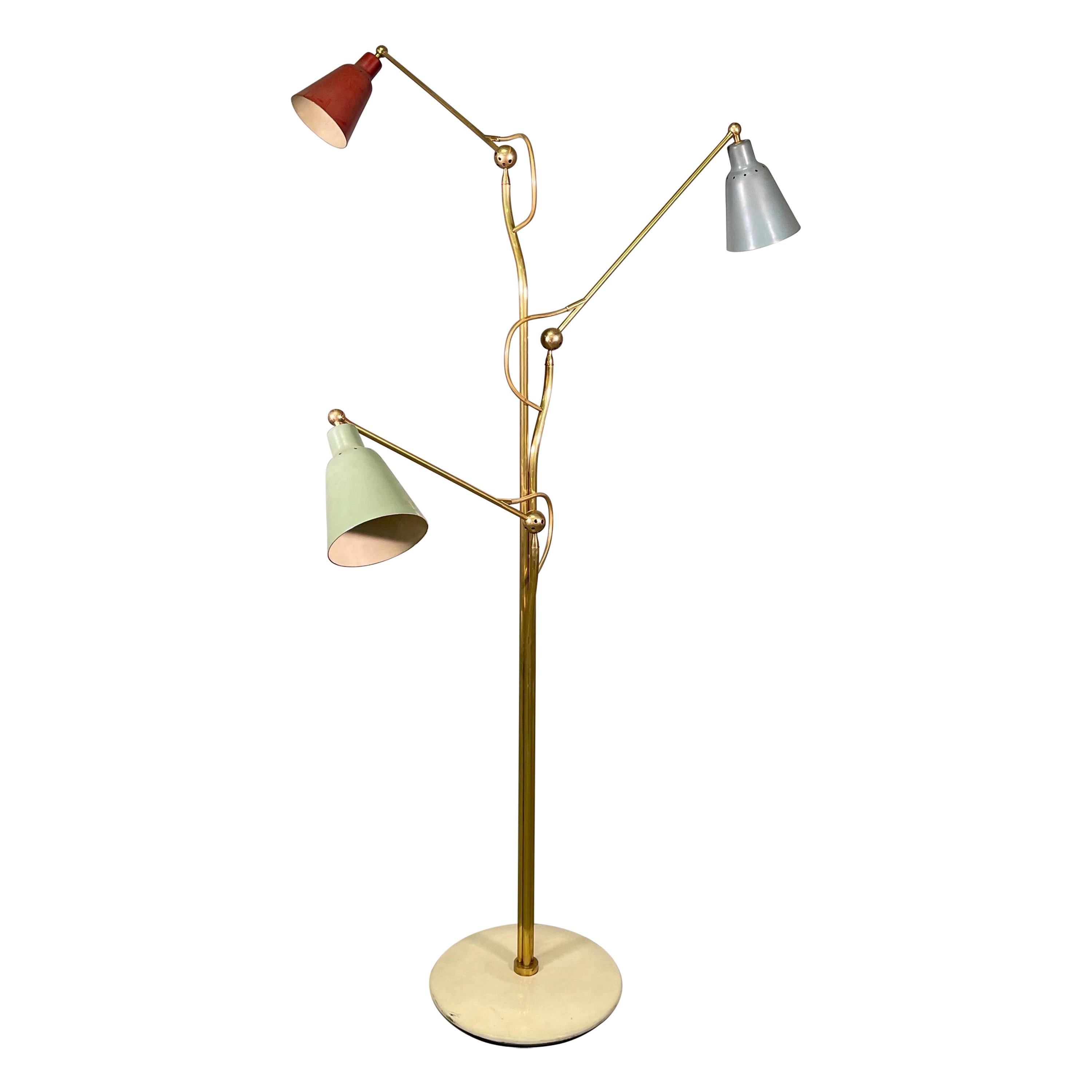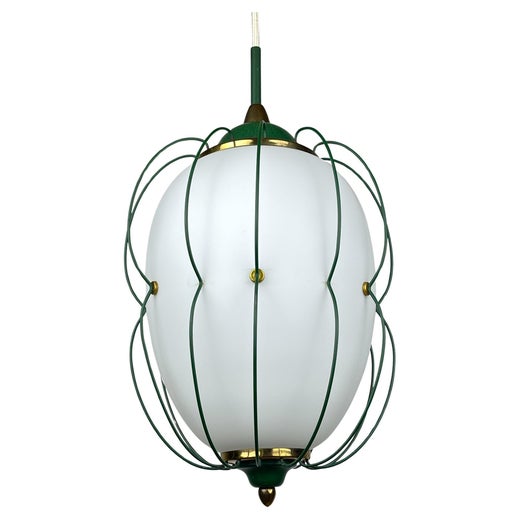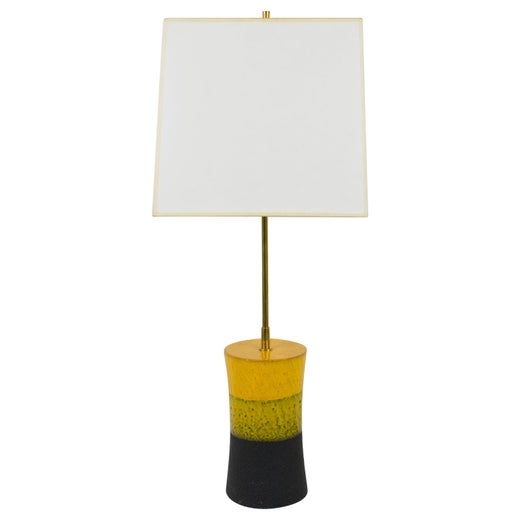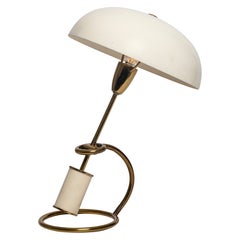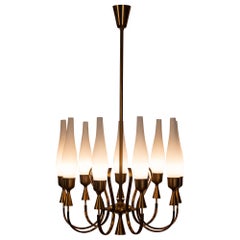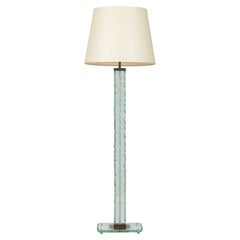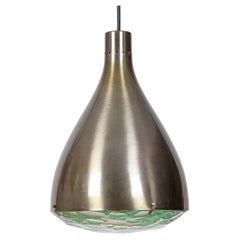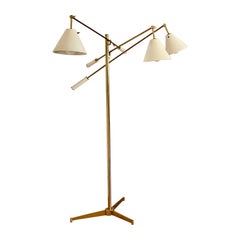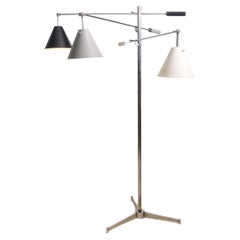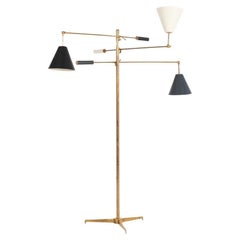'Triennale' Floor Lamp Mod. 12128 by Angelo Lelii for Arredoluce, Italy, C.1955
About the Item
- Creator:
- Design:
- Dimensions:Height: 79.53 in (202 cm)Width: 43.31 in (110 cm)Depth: 43.31 in (110 cm)
- Power Source:Plug-in
- Voltage:110-150v,220-240v
- Style:Mid-Century Modern (Of the Period)
- Materials and Techniques:
- Place of Origin:
- Period:
- Date of Manufacture:circa 1955
- Condition:Wear consistent with age and use. Oxidisation to areas on the brass, (could be polished if desired). Light scratches and minor paint losses on the painted sections - all commensurate with age.
- Seller Location:London, GB
- Reference Number:Seller: CG005381stDibs: LU2936329555902
Angelo Lelii
Angelo Lelii’s energetic and imaginative floor lamps, sconces and chandeliers often reflected his singular personality — whimsical but practical. He is responsible for some of the most delightfully eye-pleasing but functional works in the history of Italian mid-century modern lighting design.
Lelii was born Paolo Angelo Lelii in the seaport town of Ancona and moved to Milan when he was quite young. Not much is known about his early life — online resources frequently have his last name misspelled “Lelli” — except that he studied at the Superior Institute of Industrial Art in nearby Monza.
While there was no shortage of pioneering work being done in the field of mid-century modern lighting design, Lelii was a visionary whose dream was to create technologically advanced lighting that embodied the simple lines of modern design but would be defined by his own imaginative twists. In 1943, Lelii opened his first workshop in a tiny basement in Monza, under the name Arredoluce. A few years later, he designed the single-light, bent-arm Tris floor lamp. Later that year, he exhibited his Triennale floor lamp at the Milan Triennale VIII and garnered wide acclaim. This iconic, slender lamp features three adjustable arms with enameled aluminum shades.
Lelii’s sculptural fixtures in brass and cast iron appeared in the acclaimed design journal Domus, and he embarked on high-profile collaborations with Italian modernist legends such as Gio Ponti — a giant of architecture and design as well as a founder of Domus — Memphis Group member Ettore Sottsass Jr. and the brothers Castiglioni (formally known as Achille, Pier Giacomo and Livio).
Massive success followed for Arredoluce from the late 1950s and into the 1960s. For Lelii, there was his seminal Stella ceiling lamp, featuring opaque, acid-etched glass globe shades; his minimalist Cobra table lamp, which was one of the world’s first low voltage light fixtures; and his aptly named Eye floor lamp. Lelii continued to oversee design and production at his revolutionary lighting firm until his death in 1979.
Find vintage Angelo Lelii lighting on 1stDibs.
Raymor
Few had their finger on the pulse of American furniture like importer and distributor Raymor. Founder Irving Richards first had his eyes opened to the world of furniture while attending the 1928 Salon d’Automne art and design fair in Paris. He joined Lightolier two years later and developed its business relationships, including with designer Russel Wright.
Wright and Richards met in 1935 and Russel Wright, Inc. was formed in 1936. Its American Modern ceramic tableware, produced under the name Wright Accessories in 1938, was a notably lucrative collaboration. Following the early success of American Modern, Richards obtained the majority share of Wright Accessories and changed its name to Raymor Mfg Division Inc. in 1941.
By 1952, the exclusivity over American Modern had ended (the line was initially produced by Wright Associates and later manufactured by Steubenville for two decades). To keep up with American markets, Raymor worked with prominent designers such as George Nelson, Arthur Umanoff, Ray and Charles Eames, and Hans J. Wegner.
The company’s imports expanded to Denmark, which contributed to the rise of Scandinavian modern designs in the American market. Throughout the 1950s, Richards established relationships with factories in Scandinavia, Italy and Germany, as well as with the influential tastemaker and importer Charles Stendig.
The furniture company Simmons bought Raymor in 1963 and changed its name to Raymor Richards, Morgenthau Inc. in 1969. During that time, Raymor’s Omnibus range of Scandinavian-style wall units became widely popular, along with Italian glass and pottery like Bitossi ceramics designed by Aldo Londi and Bagni ceramics by Alvino Bagni.
Shifting styles coupled with rising competition, and the departure of Richards from the company, ended Raymor. By the late 1970s, Raymor faced a wave of international factories able to produce similar products of lesser quality for a lower cost. Buyers were eager to frequently change their interior styles, limiting the need for high-end, durable furniture, which Raymor had been importing.
On 1stDibs, find a collection of vintage Raymor ceramics, lamps, decorative objects and more.
- ShippingRetrieving quote...Shipping from: London, United Kingdom
- Return Policy
More From This Seller
View AllVintage 1950s Italian Mid-Century Modern Table Lamps
Aluminum, Brass
Vintage 1950s Italian Mid-Century Modern Chandeliers and Pendants
Brass
Vintage 1930s Italian Mid-Century Modern Floor Lamps
Brass
Vintage 1960s Italian Mid-Century Modern Chandeliers and Pendants
Brass, Nickel
Vintage 1960s Italian Mid-Century Modern Chandeliers and Pendants
Brass, Nickel
Vintage 1950s Italian Mid-Century Modern Wall Lights and Sconces
Brass
You May Also Like
Vintage 1940s Italian Mid-Century Modern Floor Lamps
Aluminum, Brass
Vintage 1940s Italian Mid-Century Modern Floor Lamps
Aluminum, Brass, Chrome
Vintage 1940s Italian Mid-Century Modern Floor Lamps
Aluminum, Brass
Vintage 1950s Italian Mid-Century Modern Floor Lamps
Metal, Chrome
20th Century Italian Mid-Century Modern Floor Lamps
Brass
Mid-20th Century Italian Mid-Century Modern Floor Lamps
Brass
